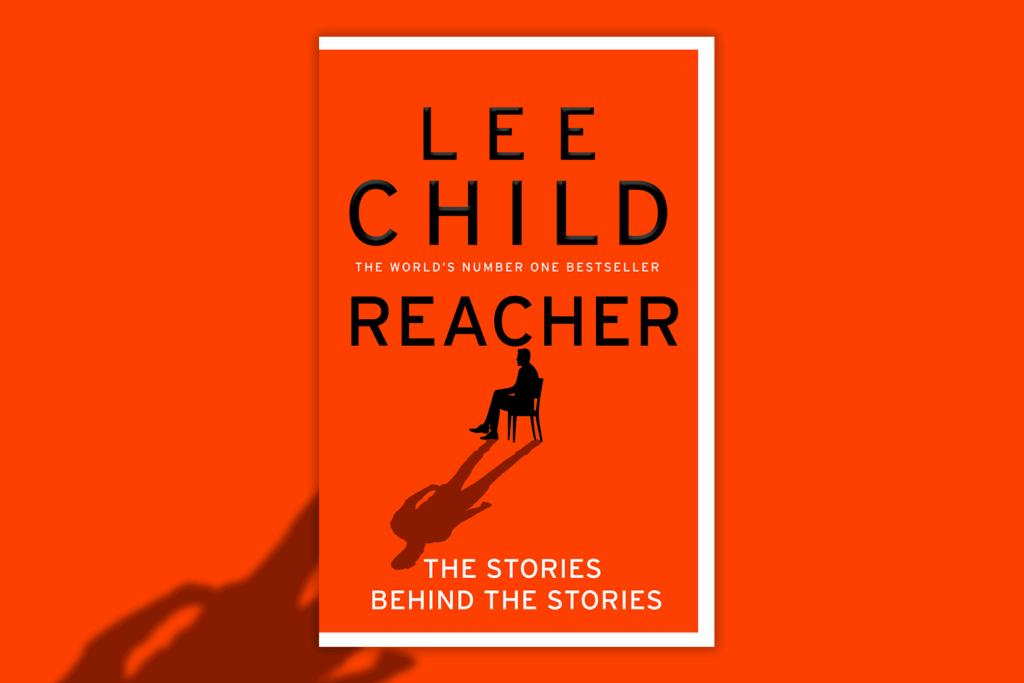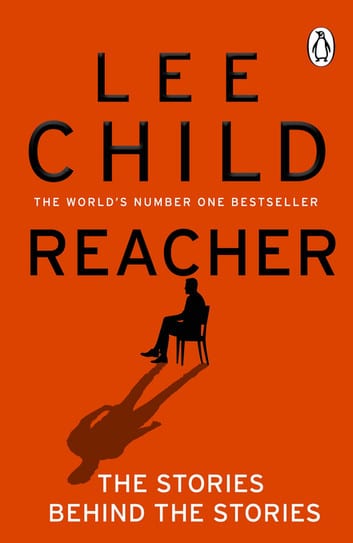Books
Lee Child: How I wrote the first Jack Reacher book
Nobody writes action thrillers like Lee Child, and his most famous creation Jack Reacher has rightly become a household name. But have you ever wondered where Child gets his inspiration from, and what drove him to create his iconic character? Well, you’re in luck. In his new book, Reacher: The Story Behind the Stories, Child shares his fascinating personal reflections on what drove him to write each of his books, and his experience of seeing them out in the world. Below, we have an exclusive extract from the first chapter of the book, where Child shares how losing his job inspired him to pick up a pencil and try something new…
Reacher: The Stories Behind the Stories
by
Lee Child
Chapter One
On Thursday August 18th, 1994, in Manchester, England, I was told by senior management at Granada Television that my studio director’s job was scheduled for elimination in an ongoing restructuring initiative, and that after a little more than seventeen years’ service, I would be unemployed by Christmas. I didn’t believe them. Given their competence level, I guessed early summer 1995 was a more likely exit date. (And I was proved right. I was eventually let go on June 21st, 1995.)
I felt that British TV was in a death spiral – partly because people like them were in charge – and in any case employment elsewhere in the industry was unlikely. But I wanted to stay broadly in the world of entertainment, so I decided to act on a contingency plan I had thought of some years previously: I would write a novel.
So, to pre-empt the coming crisis, on Friday September 2nd, 1994, I went to a stationery chain in the Arndale Centre, Manchester, and bought three pads of paper, a pencil, a pencil sharpener and an eraser. I took them home, which was then in Kirkby Lonsdale, Cumbria, England, more than seventy miles away.
On Monday September 5th, 1994, at home, at the dining room table, I sat down to write. An hour later, I gave the first chapter to my wife. I asked, ‘Should I continue?’
‘Yes,’ she said. ‘I like it.’
So I wrote through the rest of the fall and winter, at home and at work, and by March 1995 I had finished the book. But it wasn’t [Killing Floor]. Not exactly. The working title was Bad Luck and Trouble (a title I re-used much later in the series) and the story was about drug money. A year or so earlier I had bought a book about money laundering – purely for its cover: it had a real dollar bill laminated into it. It said the illegal narcotics trade in the US was all cash (obviously), and in a dry, statistical way said its annual value was twice the amount of all the cash in circulation within the fifty states. Which, I saw, meant the cartels had a serious, industrial problem. I worked out that four thousand tons of paper money had to be transported to the Caribbean banks – twice a year.
The original manuscript was based around that theme.
I typed it up on my daughter’s new laptop, and printed it out on her slow inkjet printer, and bought a copy of The Writer’s Handbook, which lists agents, and I sent a query letter and the first three chapters to Darley Anderson, in London, England. He replied immediately, by letter (this was 1995, remember), and offered representation – and eventually, after seeing the whole draft, some editorial suggestions.
The suggestions were mostly to do with the story, but one was to change the title. Darley felt that the two negative words ‘Bad’ and ‘Trouble’ would trap readers’ perceptions in the narrow niche of noir, which wouldn’t help when seeking a wider, more generalist audience. So I came up with ‘Killing Floor’ as an alternative, and it stuck. (The image of a meatpacking plant’s killing floor was present in the text, and so were lines from the song ‘Born Under a Bad Sign’ – including the line ‘Bad luck and trouble’s been my only friend,’ which are still there, of course, as trace evidence of the working title.)
I worked on the suggestions and had the second draft completed by May 1995. Darley and I went through it again and perfected a third draft by July. Nothing much happens in the world of publishing in August, so it was September 1995 before the book went out on submission. By that point I had been out of work for more than two months, and my savings were dwindling.
It was a targeted submission. Darley’s movie co-agent knew an editor at Putnam in New York who was looking for that kind of thing: David Highfill. David liked the book and wanted to buy it.
But: he wanted me to change the story. He felt that drug gangs and drug money were overdone and overfamiliar. He wanted a major launch and major attention and felt that any element of same-old-same-old would blunt the impact.
I wanted – needed, I felt – to preserve the ‘river of money’ theme. And I got lucky, because out in the real world, 1995 was the year the US had its first change in printed money for many decades. The $100 bill had been redesigned, and the new bill was being fed into circulation. There was tremendous journalistic coverage of the change, which was a move in the battle against counterfeiting. Some coverage was superficial, and some was very comprehensive. By reading it all, I saw how I could preserve the skeleton of the book by changing the flesh from narcotics proceeds to raw material for a counterfeiting operation.
I rewrote the book through the fall – over a year after starting it – and David liked what he saw, and on Thursday December 7th, 1995, he made a formal two-book offer. At that point I was seven weeks away from going broke. I had enough in the bank for one more mortgage payment, but not two.
Putnam saw it as an early spring book – March, ideally – but March 1996 was too soon for them. Line editing, copy-editing, jacket design and preliminary marketing plans had to be done. So the book was scheduled for March 1997.
And eventually it was published in that month, on Tuesday 17th, Saint Patrick’s Day. It had a truly great jacket image by Thomas Tafuri, a bloody handprint on a white background, and an author photograph taken by my then-sixteen-year-old daughter, of me sitting at the same table at which I had written the first pencil draft.
The book became an absolute exemplar of how things used to work: the specialist mystery bookstores and the crime-fiction community adopted it as a favourite; it won every genre award it was eligible for; and without selling more than a respectable number it gave me a very solid start. Since then it has sold untold millions in, as of this writing, fifty languages and ninety-six countries.
I sold the dining table when we sold the house before our move to the States, but I still have the pencil. It sits on two pegs on a bulletin board in my office, and it reminds me every day of how this whole thing started.
What’s your favourite Jack Reacher novel? Let us know in the comments below…



Please note: Moderation is enabled and may delay your comment being posted. There is no need to resubmit your comment. By posting a comment you are agreeing to the website Terms of Use.